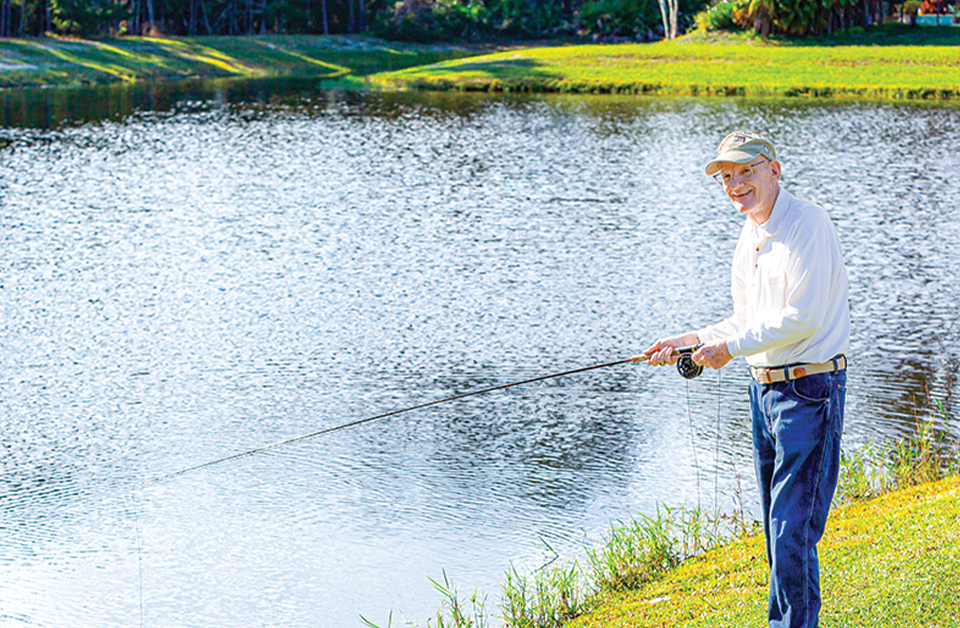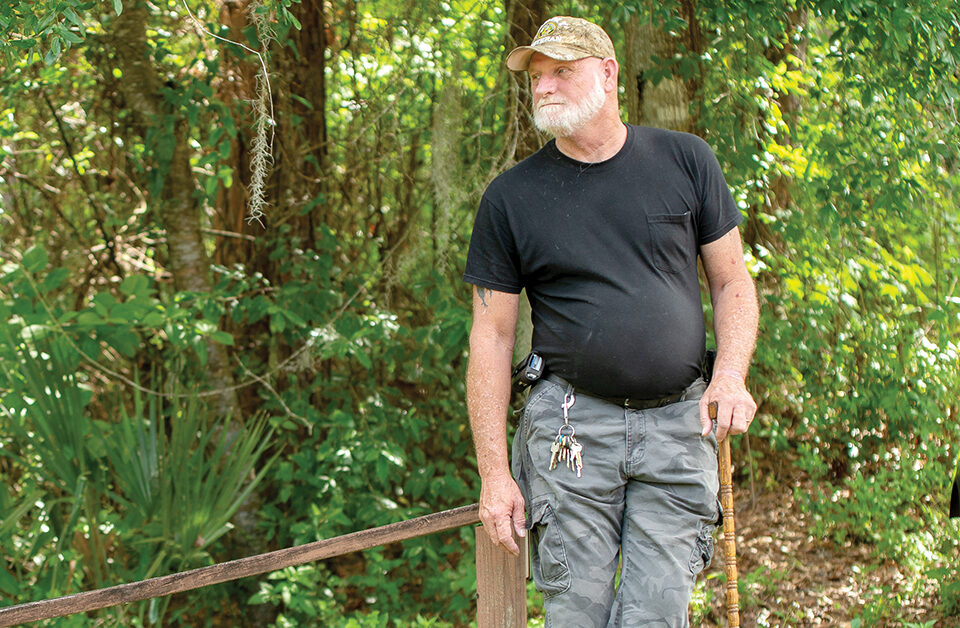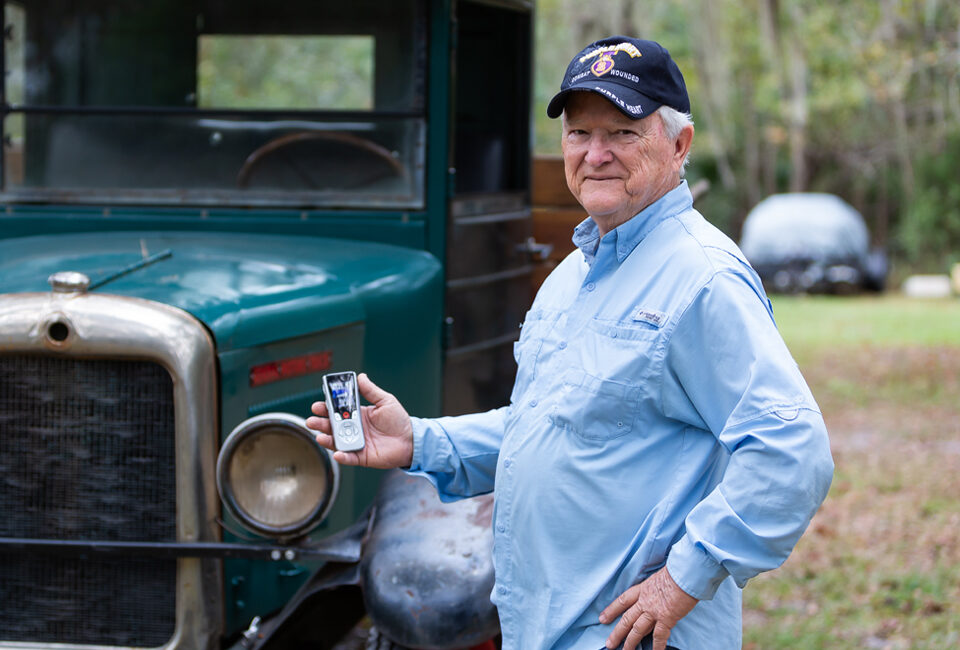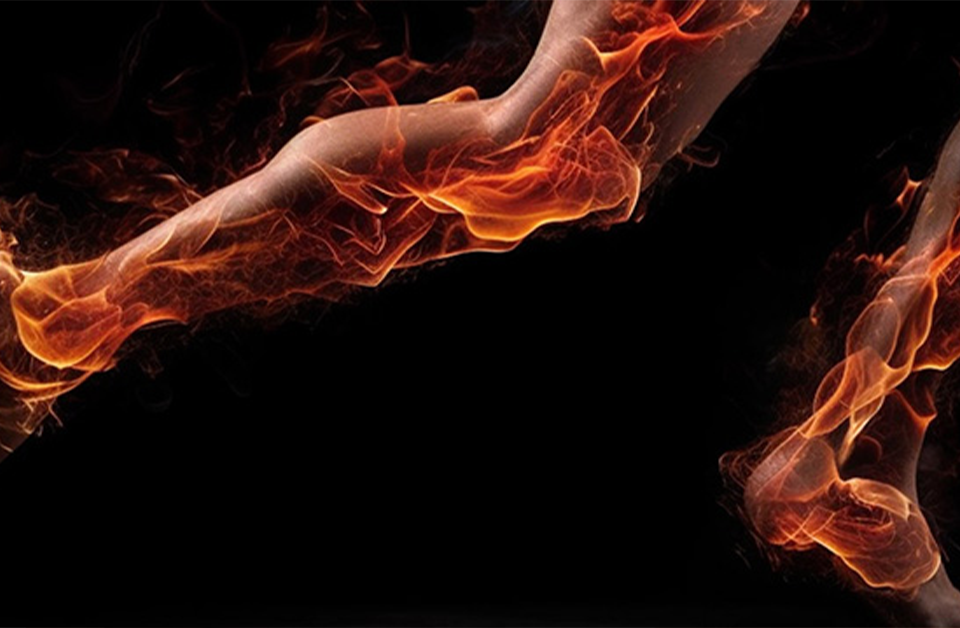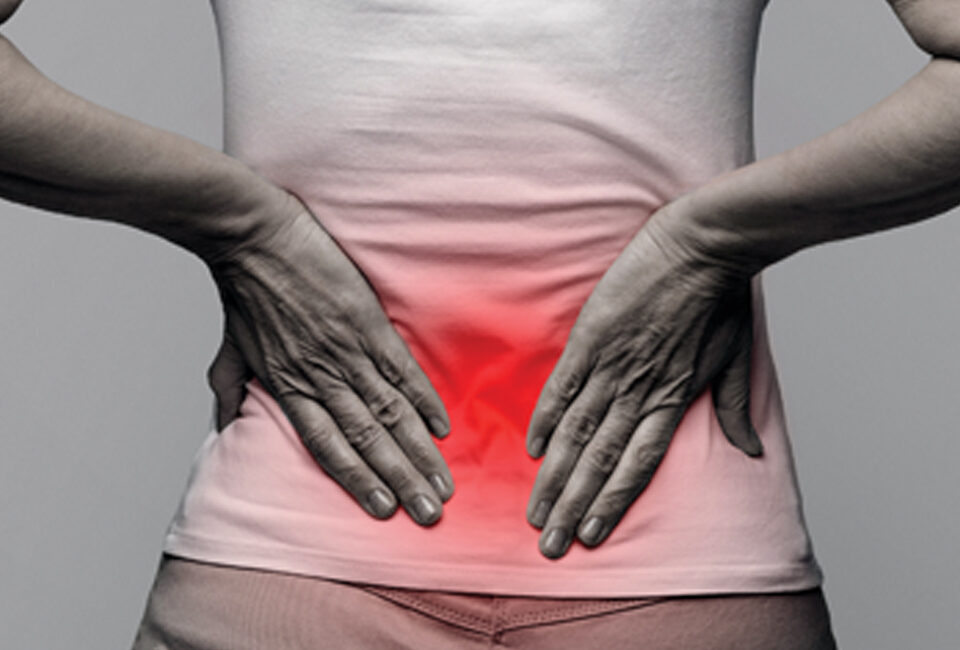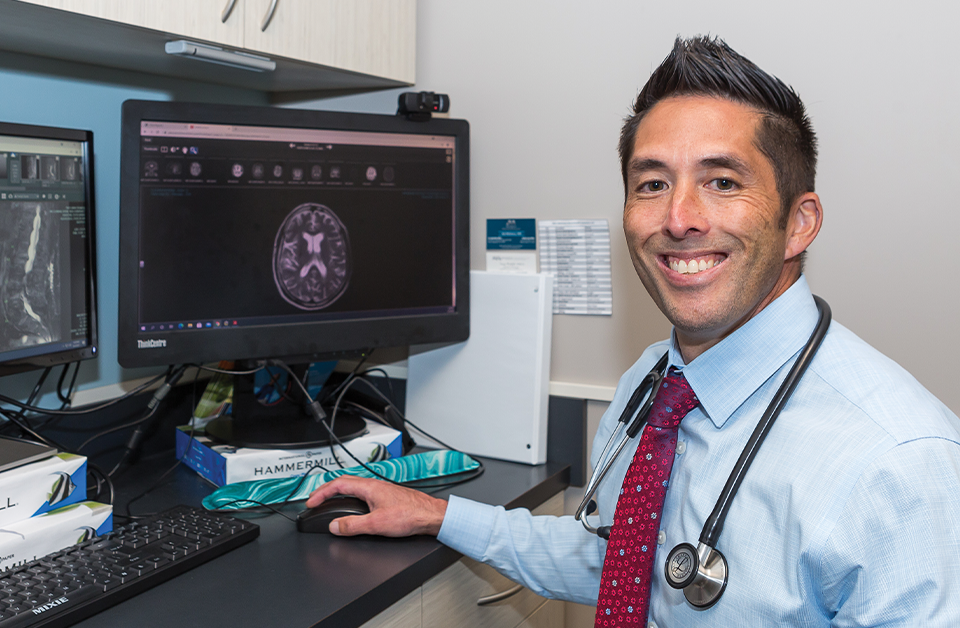

Jordan Pysz / ifoundmydoctor.com “The stimulator has completely changed my life,” Cindy enthuses.
Gary Charles Rowland began his military career in the Air Force. However, shortly after his hitch was over, Gary realized he missed the service. So, he enlisted in the Army, where he served for 36 years and achieved the rank of chief warrant officer 4. “That’s a technical rank,” enlightens Gary, 72. “It’s equivalent to a lieutenant colonel. I was promoted to lead fire operations and logistics operations.” Gary chose the Army rather than return to the Air Force because he wanted to be outdoors doing field maneuvers. He was primarily a desk jockey in the Air Force.
“I didn’t like working in the office,” Gary states. “The Air Force didn’t have
any jobs other than those that required sitting at a desk, so I went into the Army instead. I enjoyed being out in the field doing Army activities.”
After retiring from the military in 2005, Gary went to work for a Jacksonville yacht company run by a former fellow Army officer.
“He called me one day and asked if I was doing anything,” Gary recounts. “I said, No, I just retired back to St. Augustine. I eventually went to work for him and ran his supply operations for 14 years until 2019. Then I retired for good.”
“I enjoy all fishing, but I really like fly fishing,” Gary says. “There’s a pond near our house where I can practice, but we usually go up north to the mountains in northern Georgia, North Carolina and South Carolina to fish.”
About a year into his retirement, Gary had to give up fly fishing. Intense shoulder pain interfered with the smooth motion of casting his line so it floats on the water’s surface.
“It was a really severe pain, a nine or 10 on a scale of one to 10,” Gary reports. “The pain was at different times achy and sharp, but it was sharp most of the time. It was so bad that it often woke me up in the middle of the night.”
Gary speculated the problem may be related to a neck issue for which he underwent surgery in 2020. Otherwise, he could not pinpoint an injury that triggered the pain.
“It just developed over time, kind of the nature of the beast with what I had been doing because I was always lifting stuff when I was in the Army,” Gary recounts. “But now, I couldn’t lift anything because of the pain.”
Seeking help, Gary made an appointment with Kai McGreevy, MD, DABPN, RPVI, RPNI, RMSK, a board- certified neurologist, pain management specialist and founder of McGreevy NeuroHealth.
“I went straight to Dr. McGreevy,” Gary says. “My wife goes to him, and she’s achieved good results with her condition. I didn’t trust anybody else.”
Initial Treatments
Dr. McGreevy uses the most advanced treatment modalities to restore his patients’ neurological deficits and ease their pain.
“Mr. Rowland came to me for a consultation for shoulder pain,” Dr. McGreevy reports. “He had been struggling with the pain for several years, and it was limiting his range of motion to a level that impaired his quality of life. The pain was gradually worsening, but he was uninterested in surgery to treat the issue.
“I examined his shoulders and arms, noting on ultrasound that he showed evidence of joint degeneration as well as bursitis and tendinosis. Most of these changes were related to wear and tear.
Bursitis is inflammation of the small, fluid-filled sacs called bursae, which act as a cushion between tissues. The major bursae are in the large joints, including the shoulder. Tendinosis is the deterioration of a tendon, typically in response to overuse.
“We next tried various injections, including cortisone, into the bursae and platelet rich plasma for the tendinosis,” Dr. McGreevy details. “But it still wasn’t enough to improve Gary’s quality of life and daily functioning, so I recommended peripheral nerve stimulation.”
Peripheral nerve stimulation involves the placement of a small electrode near the nerve targeted for treatment. In the case of chronic shoulder pain, that is the suprascapular nerve, which travels across the shoulder and back toward the scapula (shoulder blade).
Using fluoroscopic guidance, the doctor places the electrode under the skin within a few millimeters of the nerve.
“When turned on, the electrode delivers pulses of high-frequency electrical stimulation that essentially seizes the pain signals in the nerve and prevents them from traveling toward the spinal cord and up to the brain,” Dr. McGreevy explains. “If there are no pain signals, there’s no pain sensation.
“There is an external, wearable antenna assembly, which is very soft and easy to hide under clothes,” Dr. McGreevy informs. “This antenna powers the stimulator beneath the skin. It powers the receiver, which is made of a very fine material and is located within the electrode itself.”
The antenna is secured in the middle of the back and held in place by a removable strap around the chest.
The stimulator uses different electric waveforms. It can be programmed to replace the pain with a more pleasant sensation called a paresthesia, or no sensation at all.
“The peripheral nerve stimulator we used for Mr. Rowland has both options,” Dr. McGreevy notes. “He can choose tonic stimulation, where the pain is replaced with a vibratory buzzing or soothing sensation. He also has a non-paresthesia option. The choice depends on the patient’s preference. Mr. Rowland uses both but prefers the non-paresthesia option.”
Dr. McGreevy adds that peripheral nerve stimulation can be used to ease shoulder pain in patients who wish to avoid surgery, such as Gary, and when pain persists following surgery.
“Some patients with chronic shoulder pain are not candidates for surgery. They may have medical conditions that preclude anesthesia, or their physicians choose not to treat with surgery,” the neurologist contends. “Peripheral nerve stimulation is an excellent option for these patients.
“In other instances, patients undergo surgery but still have refractory pain that involves the suprascapular nerve. I’ve treated patients who’ve had surgery and those who haven’t with peripheral nerve stimulation and achieved very good success in both cases.”
Dr. McGreevy adds that peripheral nerve stimulation for chronic shoulder pain is covered by Medicare and most health insurance plans.
Positive Results
Gary says that when he was first fit with his peripheral nerve stimulator, his pain decreased by more than 80 percent. Since then, his pain has disappeared almost entirely.
As he became more comfortable with the stimulator, Gary slowly returned to his activities.
“I’m fishing, working out at a fitness center and sleeping through the night again,” he reveals. “I haven’t tried golfing yet, but I’m going to shortly. I’ll let the stimulator warm up, then go out and hit some balls to see how it works.”
A Stimulator for Stenosis
Cindy Papajohn’s father was dedicated to the military. While stationed in Alaska, he homesteaded in The Last Frontier, where Cindy was born. When the opportunity arose to relocate to Florida, her father seized it.
“He had a chance to work at the military affairs headquarters in St. Augustine, so he moved us here and we never left,” elaborates Cindy, 58. “I was 2 years old when we moved to Florida. I was raised in St. Augustine.”
As an adult, Cindy temporarily left Florida for jobs in Michigan and North Carolina, where she organized therapy groups at psychiatric hospitals. After 20 years in that field, she returned to the Nation’s Oldest City.
After making her return, Cindy was forced into retirement by rheumatoid arthritis and excruciating lower back pain, the latter of which she blames on years of running, surfing and the physical demands associated with playing basketball, volleyball and softball.
“I didn’t injure my back per se,” Cindy expounds. “But I participated in so many sports growing up that it caused disc issues. My low back pain was the result of damage caused by playing all those sports. It finally caught up to me about 10 years ago.
“I had numbness down my left leg to my ankle and heel. I initially thought the problem might be diabetes, so I went to my doctor to be tested. The tests showed that I had spinal stenosis and that a disc in my lower back was herniated.”
Spinal stenosis, which commonly occurs in the neck and low back, is the narrowing of the space within the spine. The constriction puts pressure on the spinal cord as well as the nerve roots that exit the spine through the foramen, the openings in the vertebrae. The condition is typically caused by age- related wear and tear.
“The pain in my lower back was terrible,” Cindy reports. “On a scale of one to 10, it was above a 10. It wasn’t like that 24/7, but it was like that a lot. It was so bad that I was unable to sit or stand or really do much of anything.
“One thing I’ve always loved to do is go to the beach and look for shark teeth. But my pain was so bad I couldn’t bend over to do that. I couldn’t do much of anything outside of the house because I could only walk for short distances before the pain set in.
“And once it did, it would usually get so bad that I’d have to sit or lie down for a while. It eventually got to where I was in bed almost all day every day. But couldn’t sleep really well either because I just tossed and turned all night.”
By that time, Cindy was at her wits’ end. Then she received more bad news.
“The pain clinic I was going to suddenly stopped taking my insurance,” Cindy shares. “So, I called around to find another neurologist or pain clinic that would provide pain medication because at that time they were really cracking down on prescribing it. I asked my regular doctor for a recommendation, and he suggested Dr. McGreevy.”
Stimulator, Part II
“Ms. Papajohn came to us in 2019 as a new patient struggling with chronic low back pain,” Dr. McGreevy recalls. “An MRI showed areas of foraminal stenosis, or narrowing around the spinal nerves, and some degenerated discs in her lumbar spine.
“We initially treated her using conservative measures that included pain medication, various injections and physical therapy, and she made short- term gains. But she ultimately decided she wanted a treatment that would ease her pain on a more consistent basis, something that would give her longer- lasting relief.
“That’s when we decided to move forward with a spinal cord stimulator.”
Spinal cord stimulation, or SCS, was introduced about 40 years ago and has been evolving ever since. Today, SCS is one of the only interventional pain therapies available to provide 24/7 treatment of chronic pain, Dr. McGreevy contends.
“It’s been shown to be effective for the majority of patients, including those who have already undergone spine surgery, as Ms. Papajohn had,” the doctor notes. “It can also reduce a patient’s need for long- term narcotic medication.”
Like with Gary’s peripheral nerve
This stimulator is implanted in the epidural space around the spinal cord.
Dr. McGreevy began by recommending a three-day trial to determine if the stimulator would be effective in easing Cindy’s pain. The trial “produced about 80 percent relief of her low back pain, which was exciting,” Dr. McGreevy observes.
Based on the trial results, Dr. McGreevy permanently placed the stimulator a few weeks later. During the placement procedure, a small paddle electrode was placed along Cindy’s spinal cord near the origin of her pain. The lead was connected to her stimulator’s charging unit, which was implanted just beneath the skin near her hip.
“Living Again”
As it did during the trial, Cindy’s stimulator produced an 80 percent reduction in pain along with improved functioning and an improved quality of life, according to Dr. McGreevy.
“The stimulator has completely changed my life,” Cindy enthuses. “Instead of lying in bed all day every day, I’m living again. I can ride my bike, take long walks and go shopping. I can also spend hours at the beach looking for shark teeth and swimming. I can stand and do things in the house, and I have a lot more endurance. I’m sleeping much better, too, because I’m not in constant pain.”
Cindy gives the credit for her SCS success to Dr. McGreevy. She says she’s grateful that he was so dedicated to relieving her pain and helping her resume an active life.
“Dr. McGreevy is terrific, and his nurses are awesome,” she concludes. “My treatment at McGreevy NeuroHealth has been an absolute success. I would highly recommend Dr. McGreevy and his spinal cord stimulator to anyone with back pain. I’ve already referred my mother, father and sister to him.”
Gary, who is benefiting from the peripheral nerve stimulator, also praised Dr. McGreevy.





